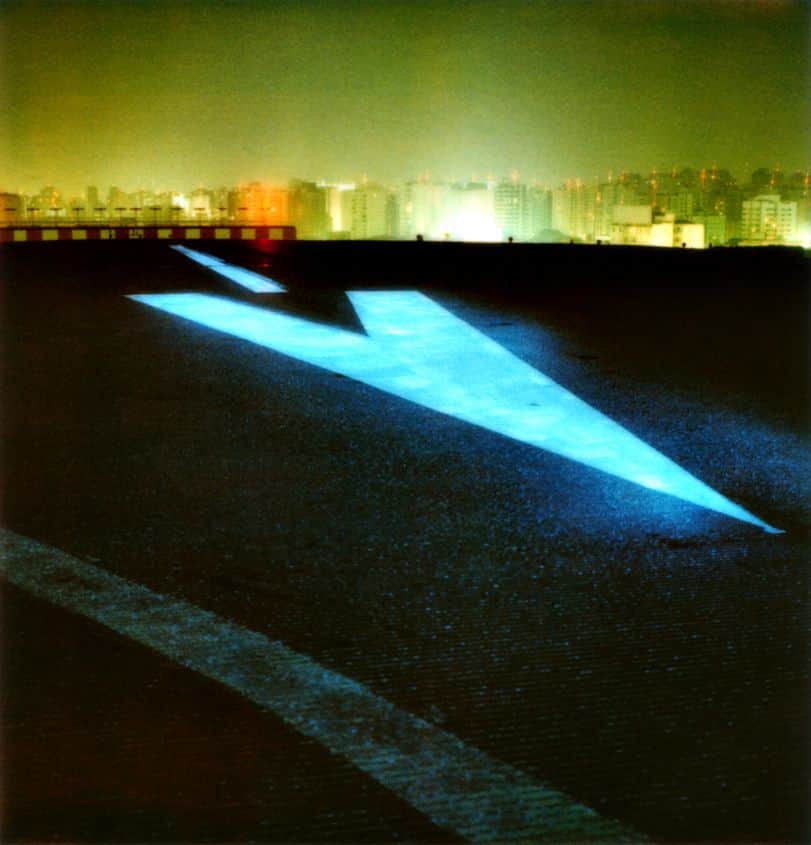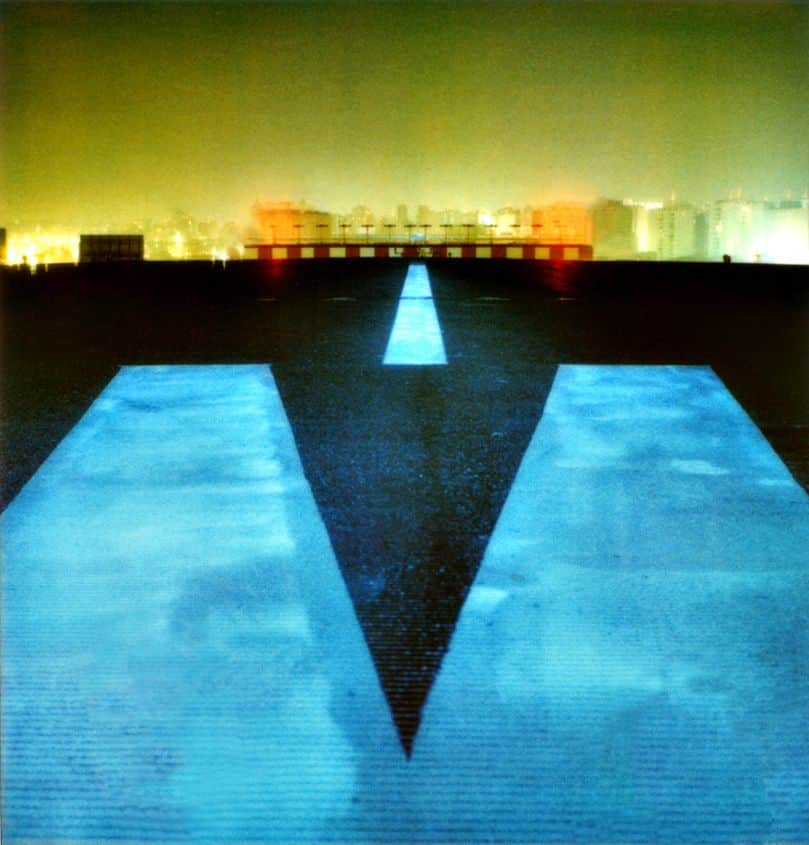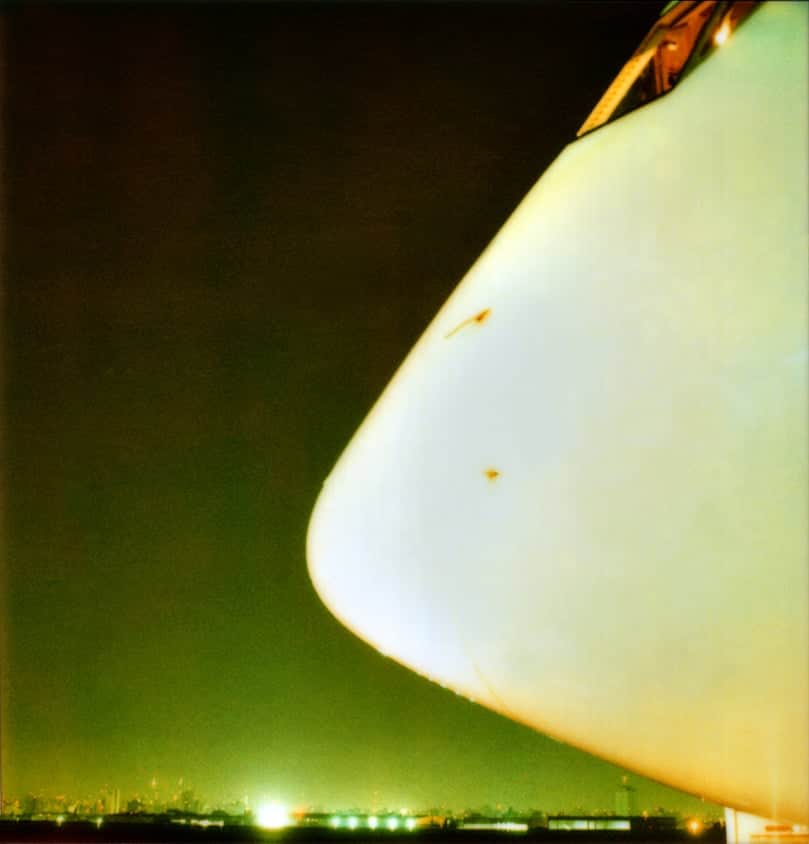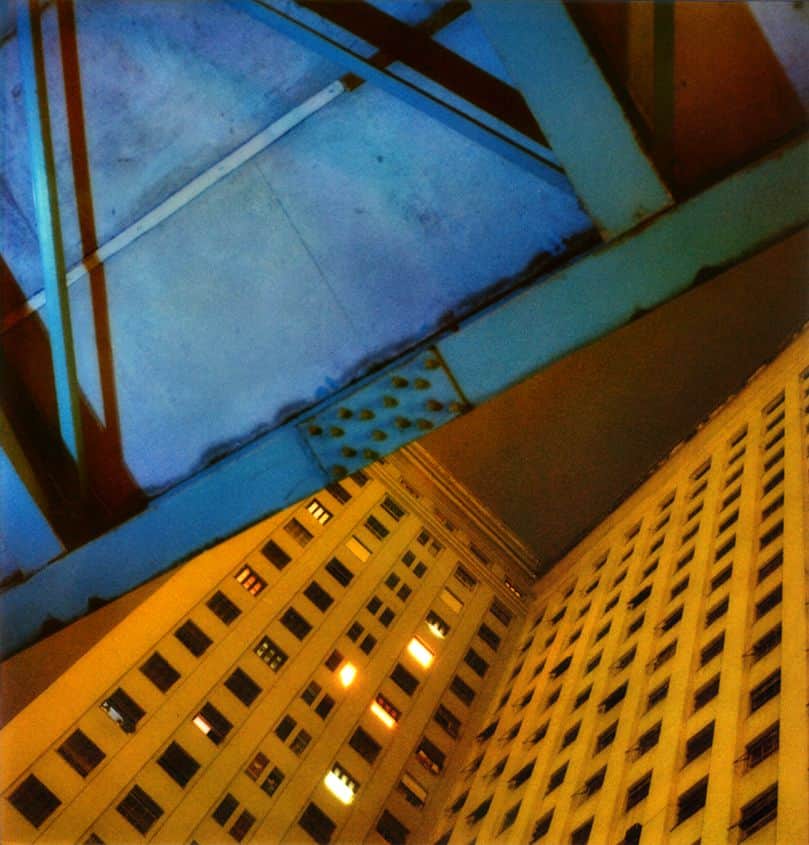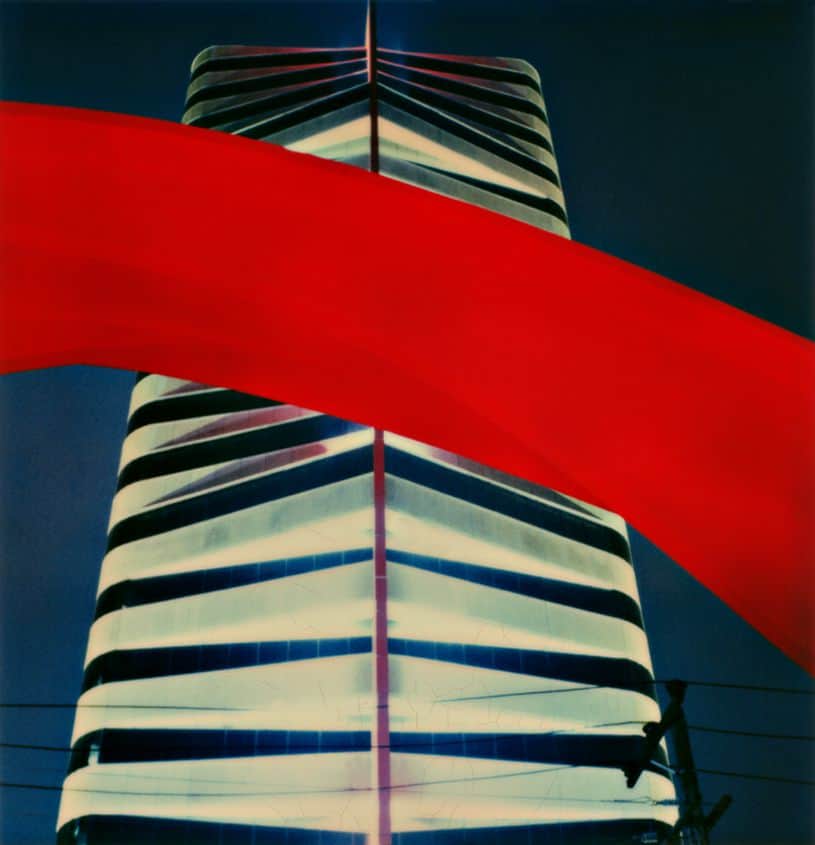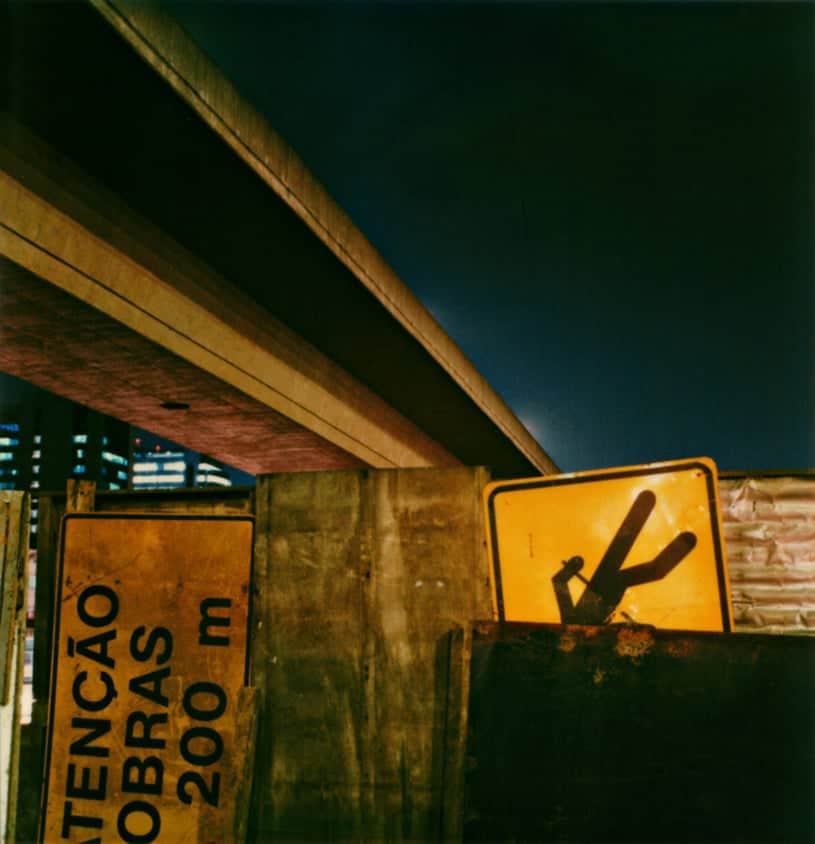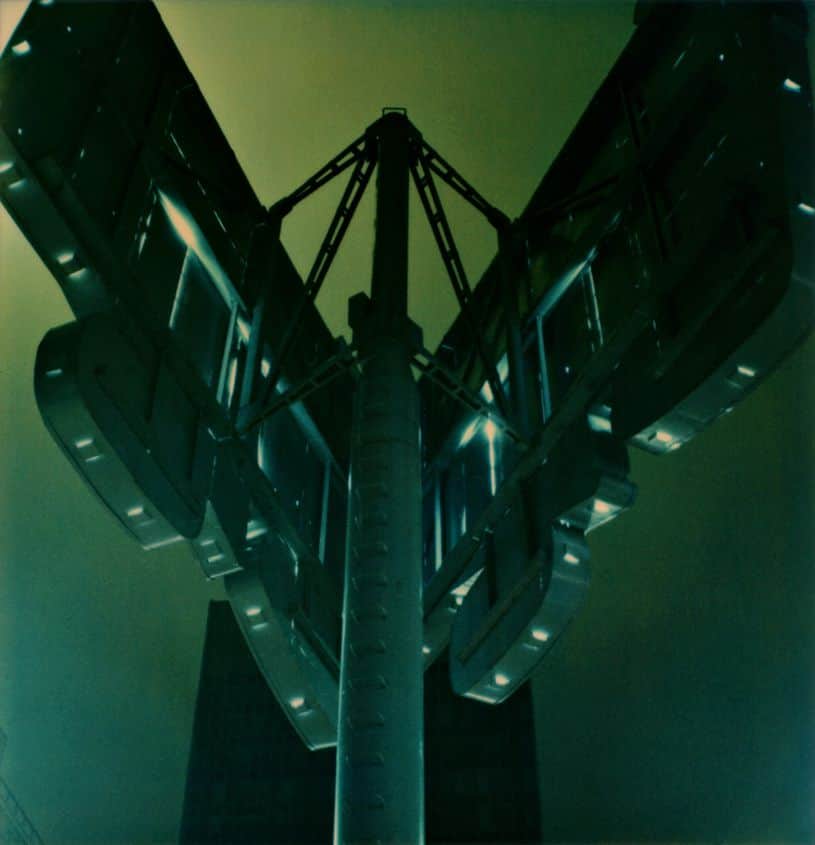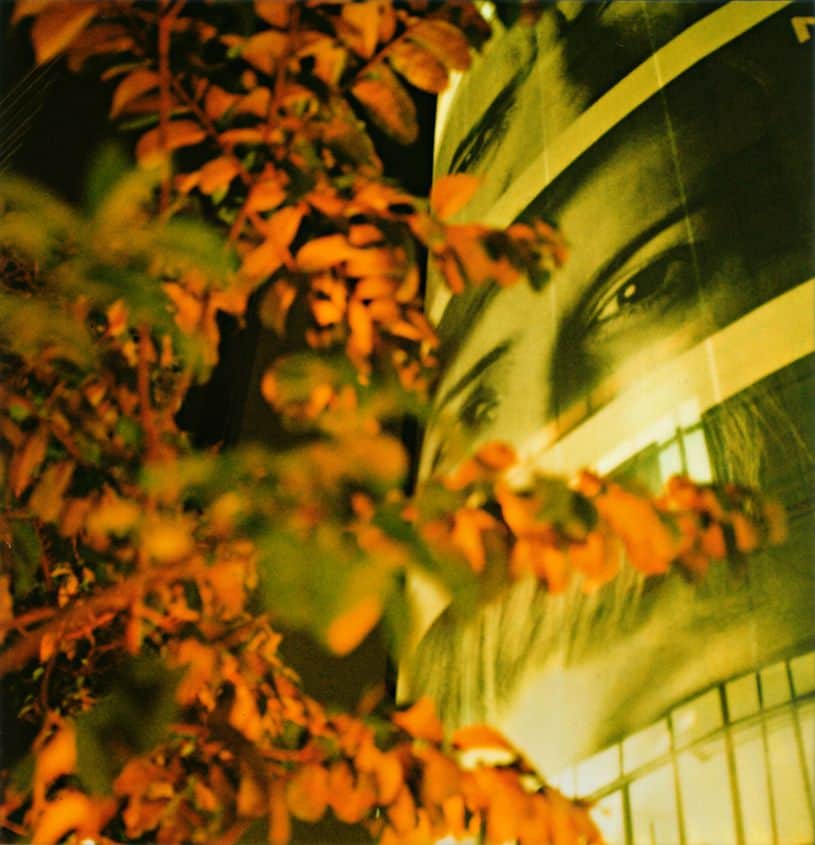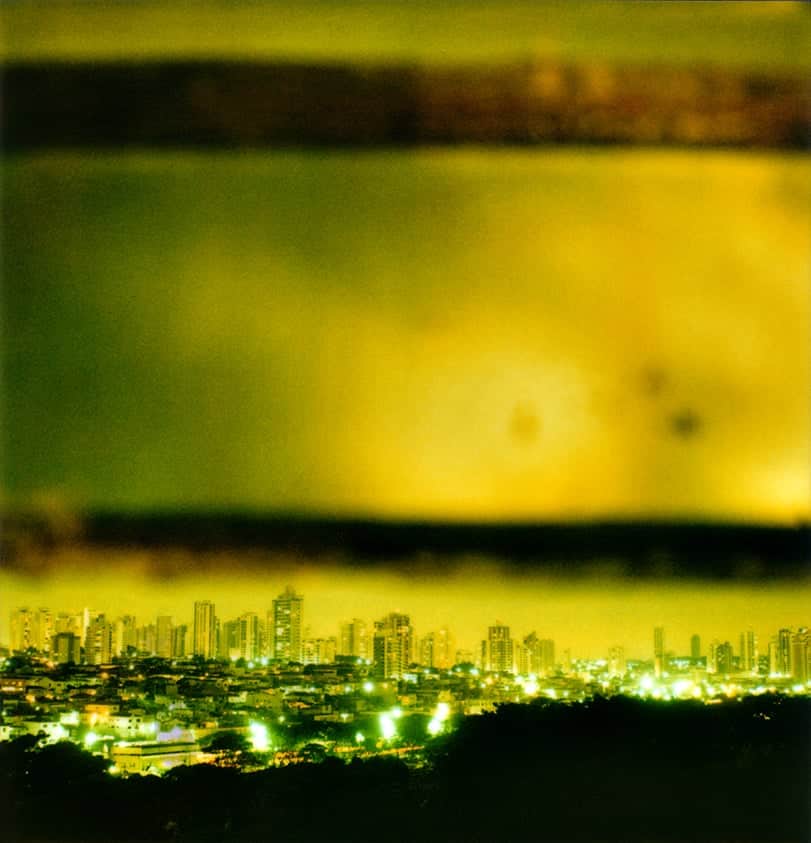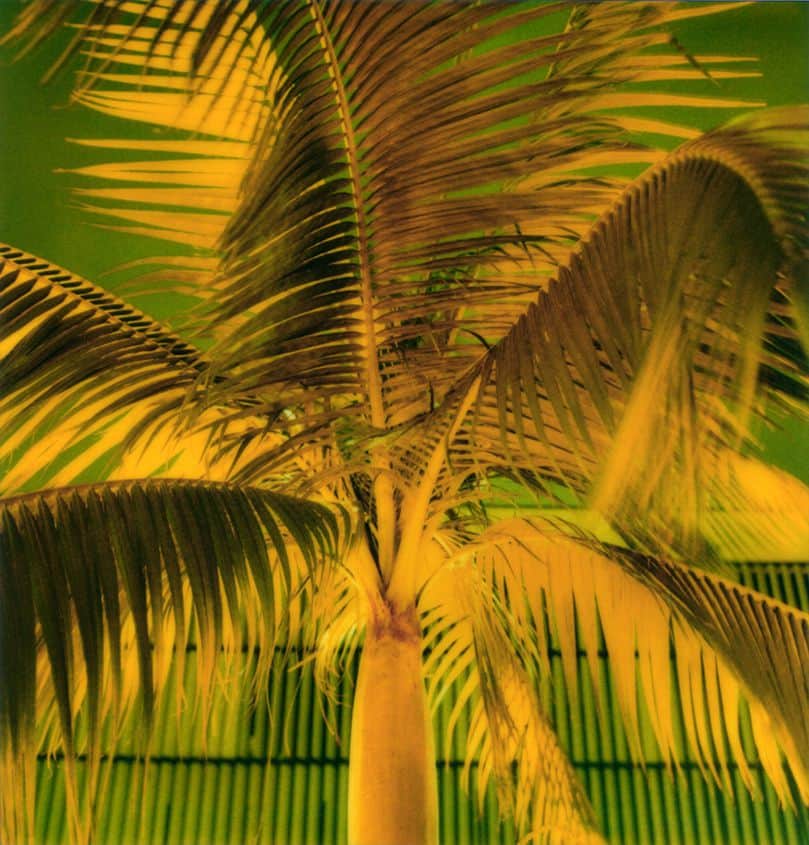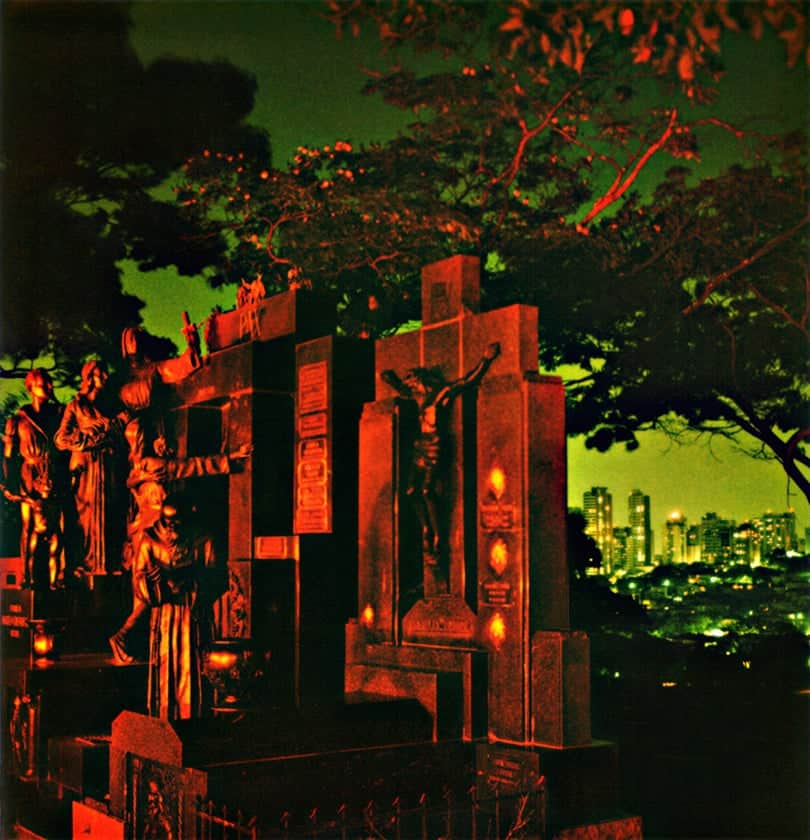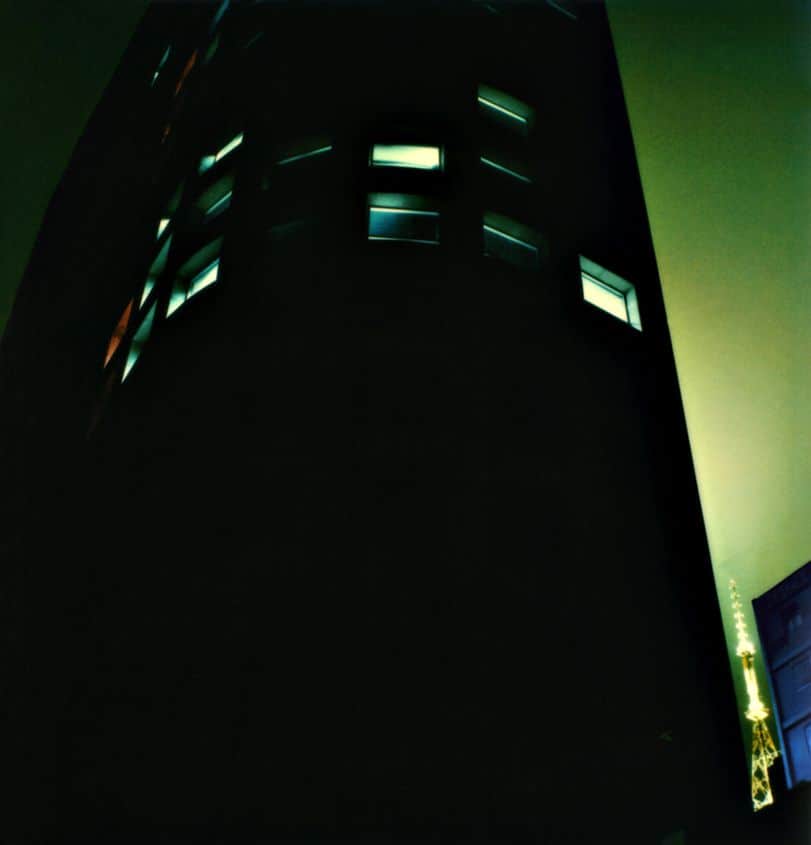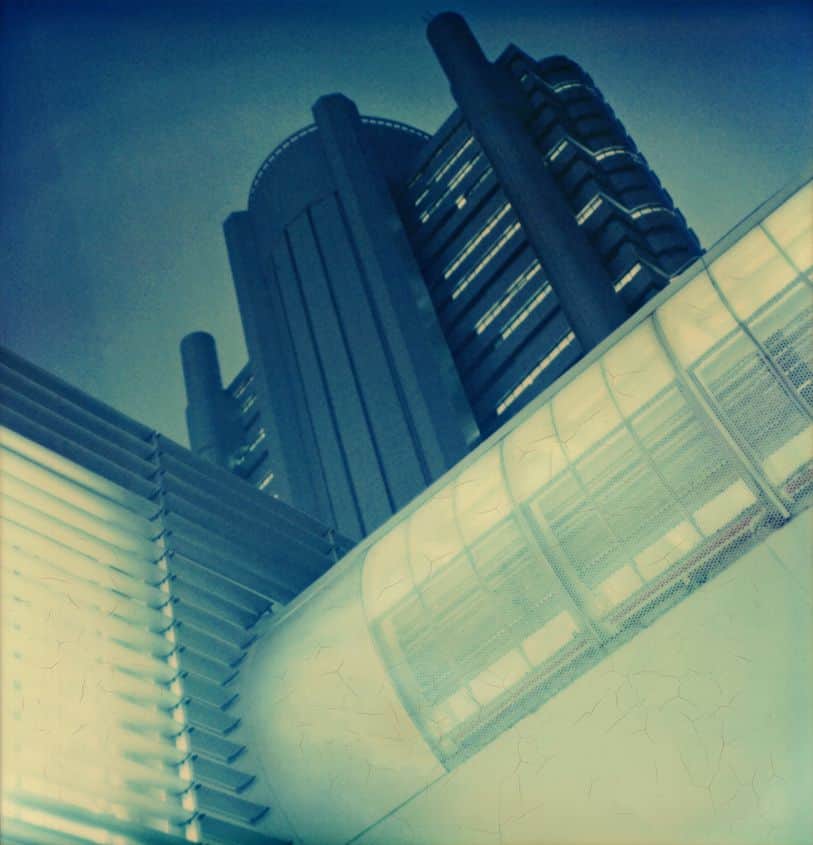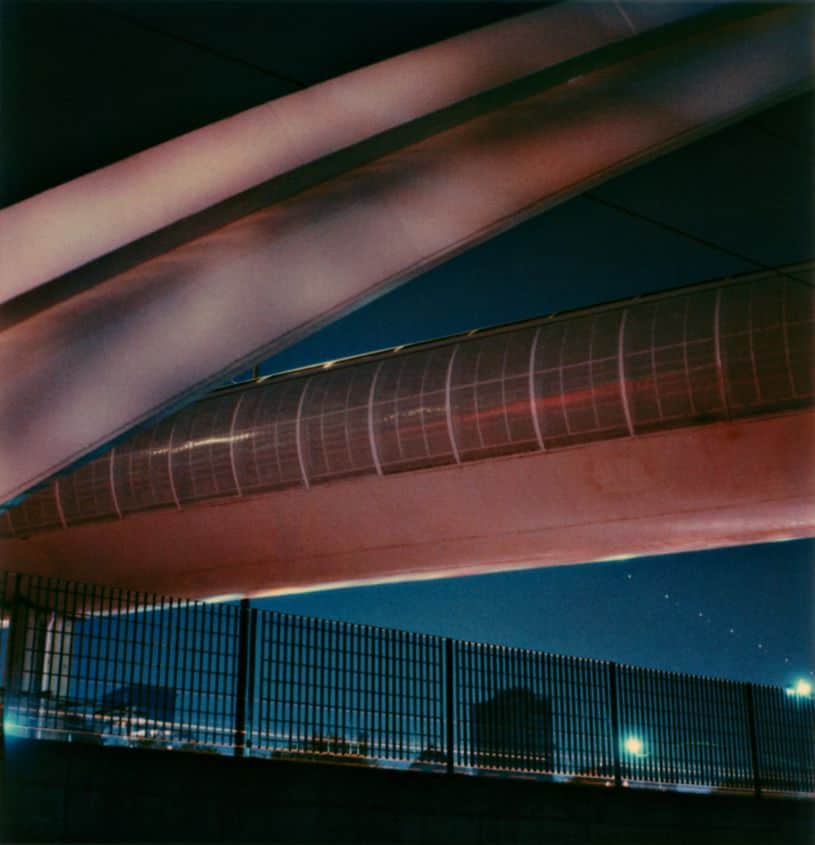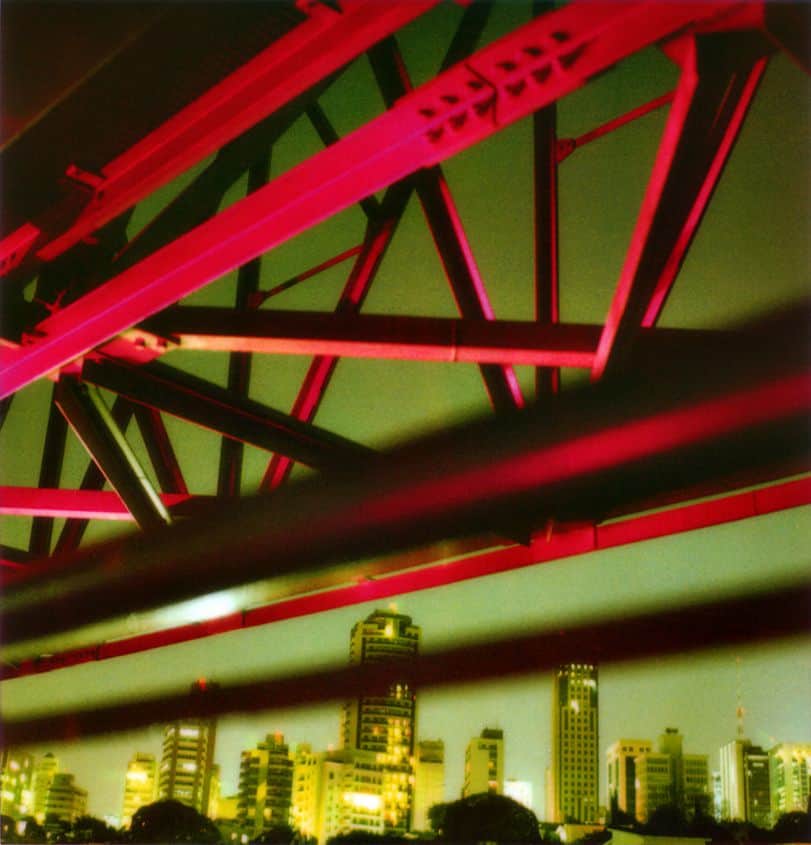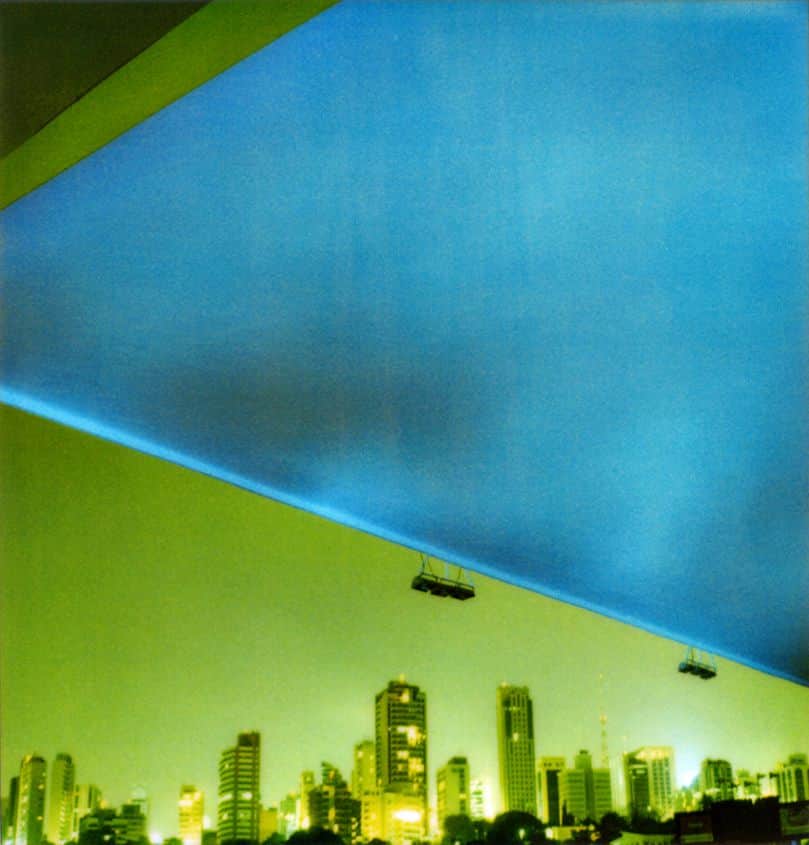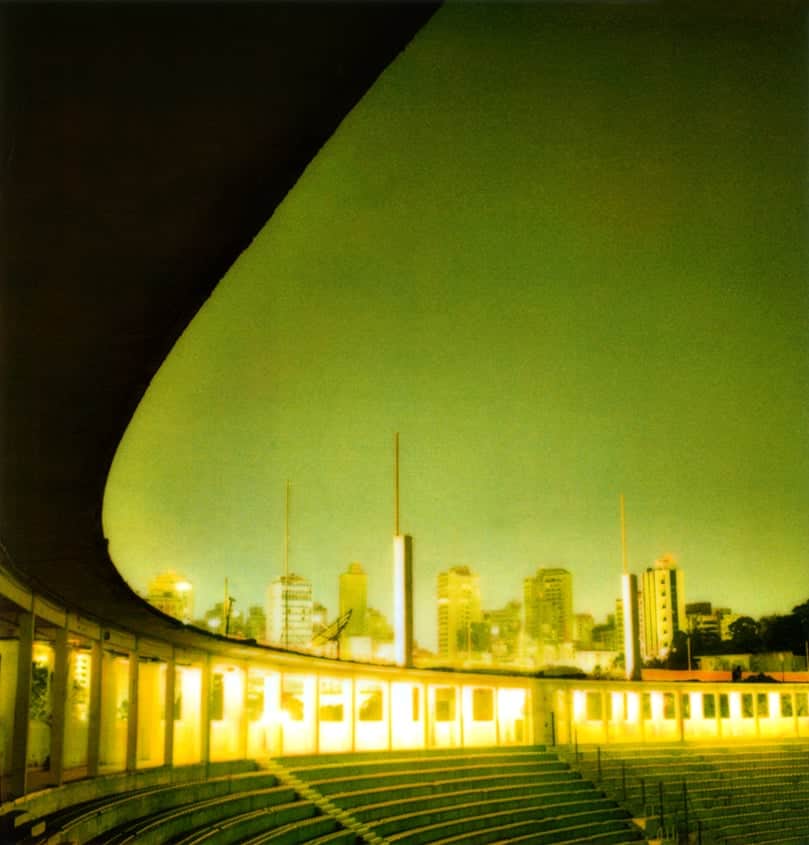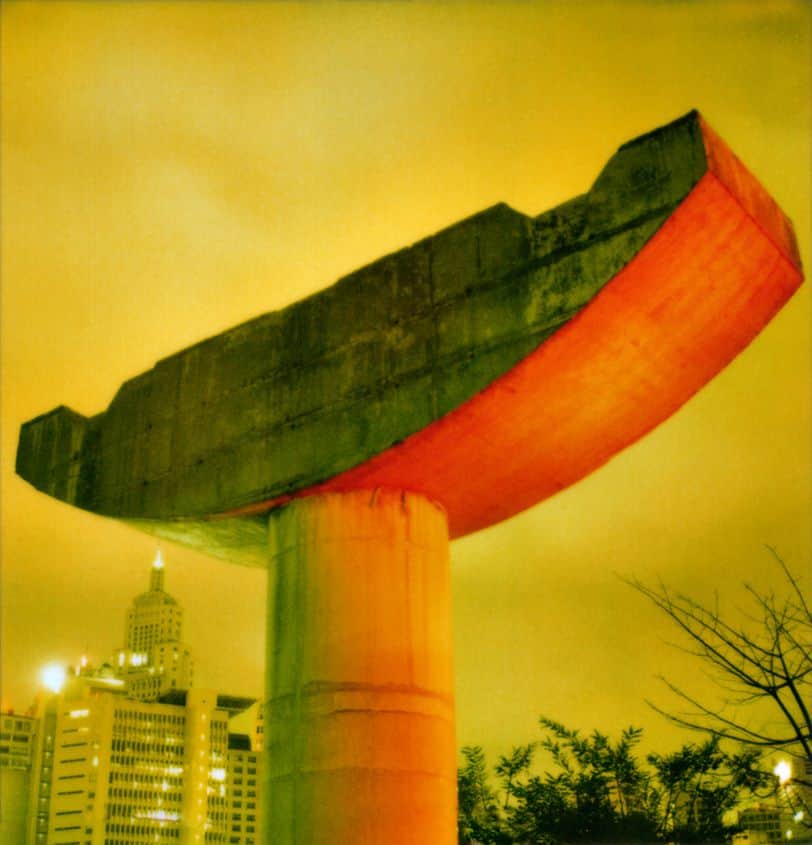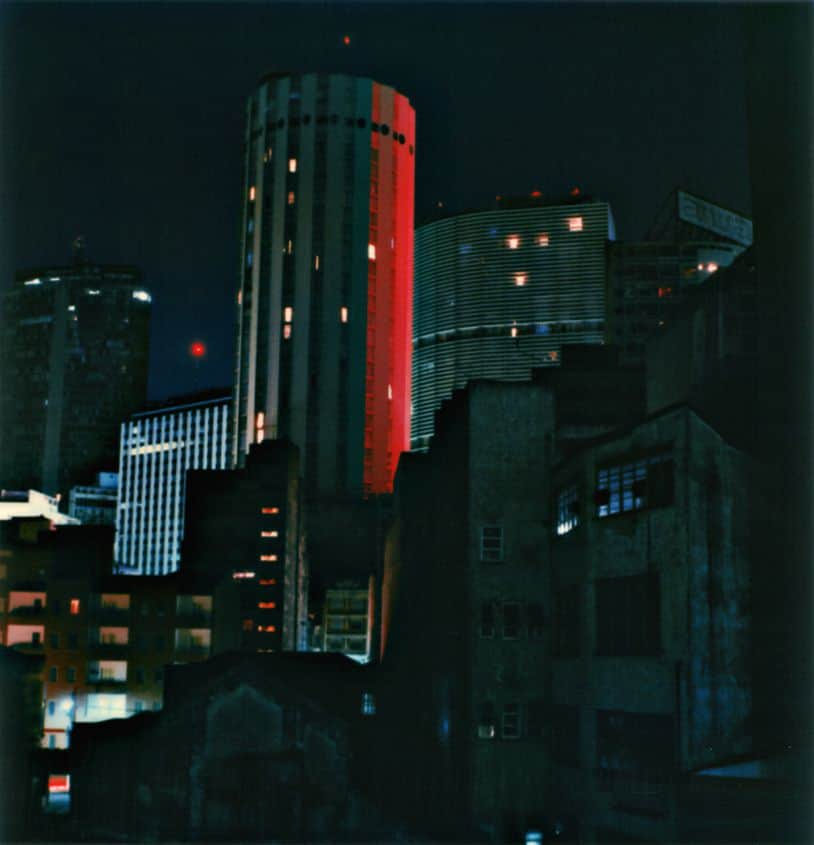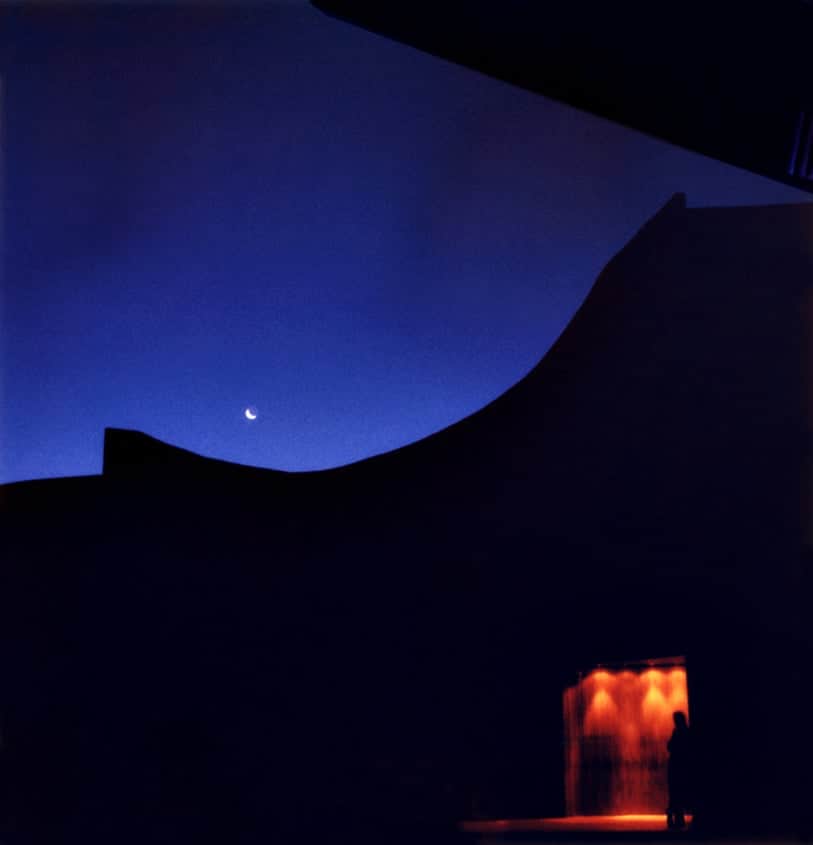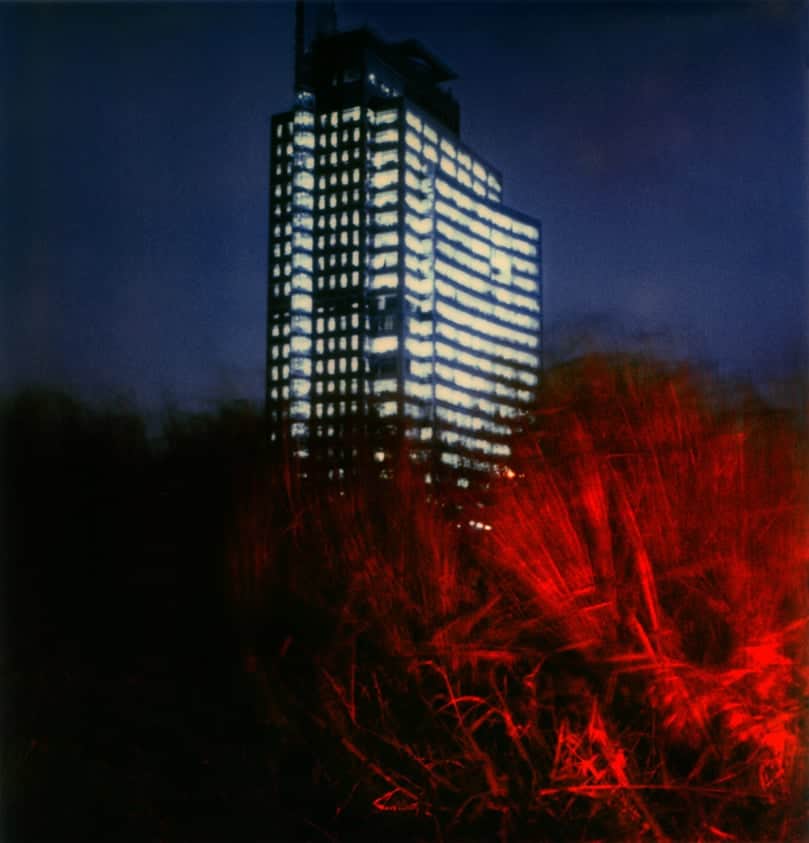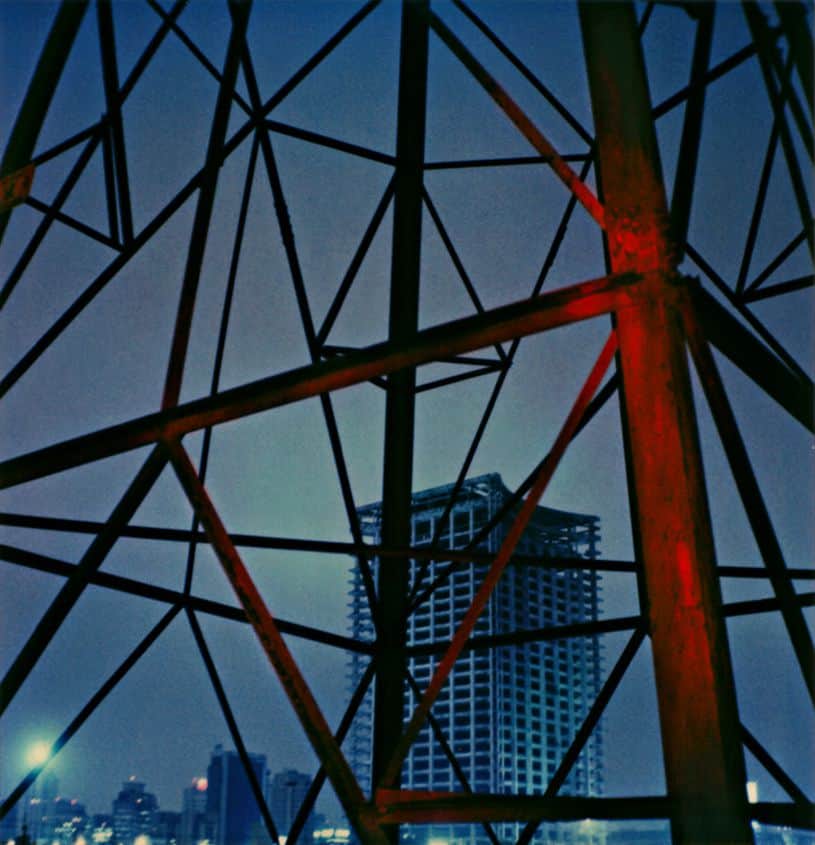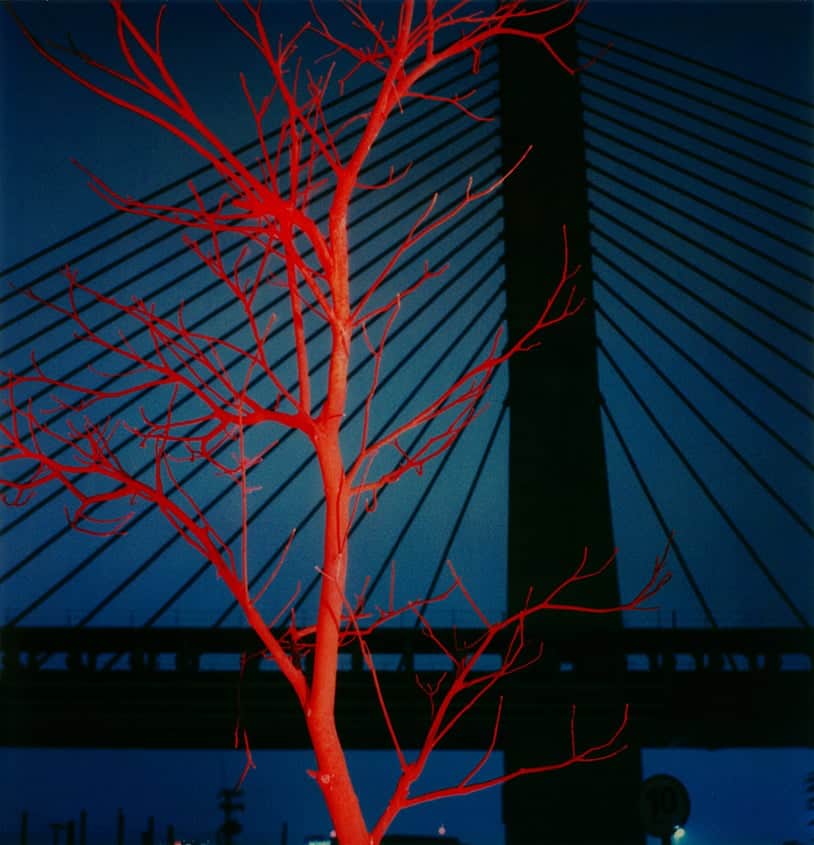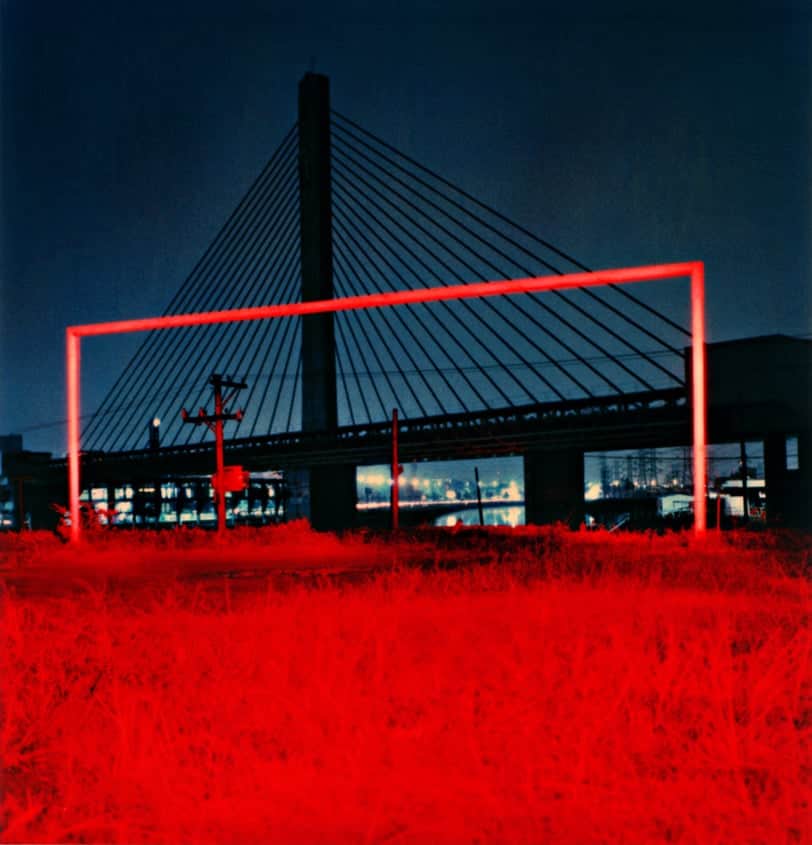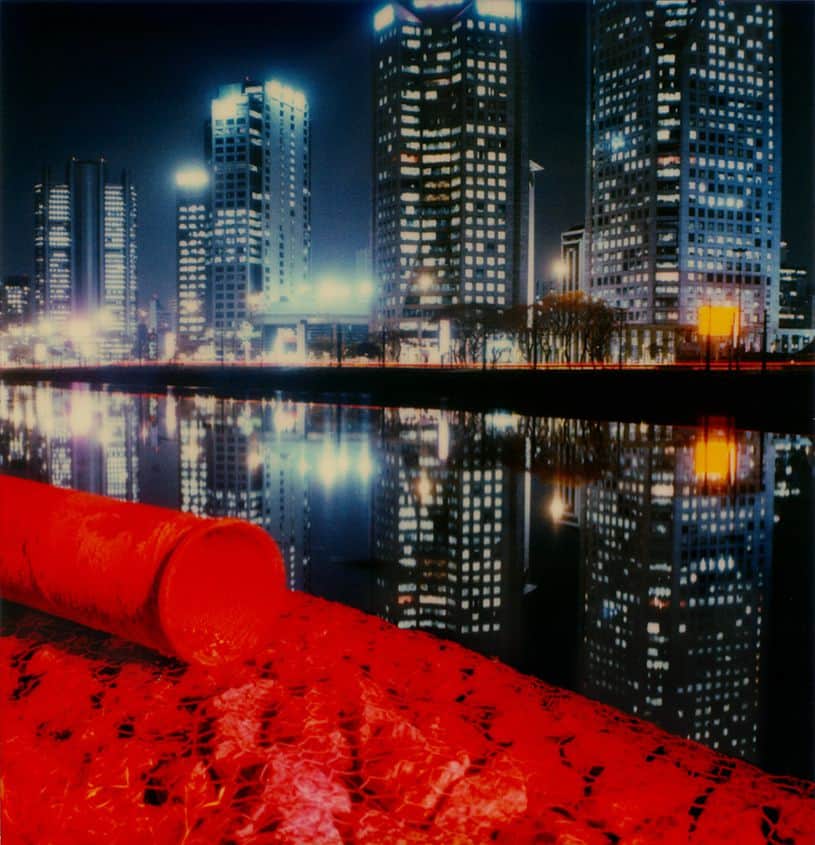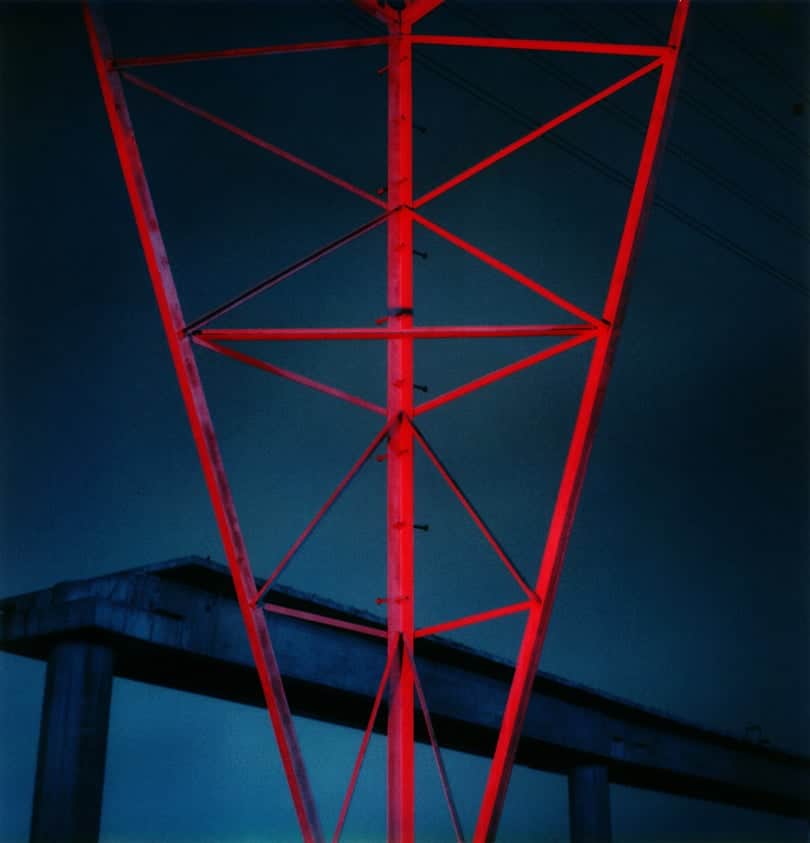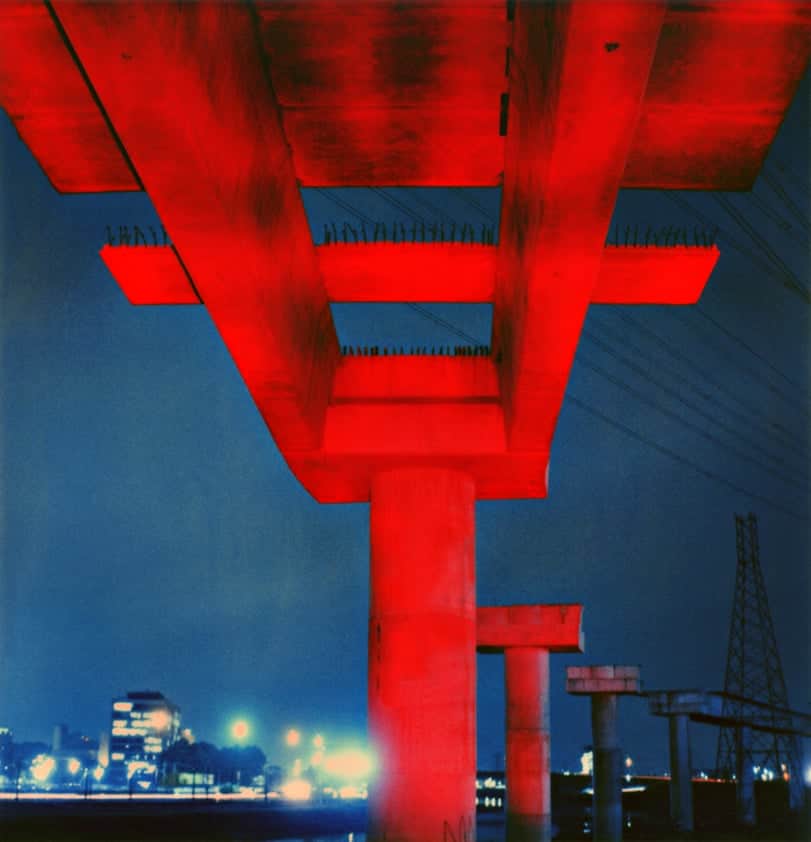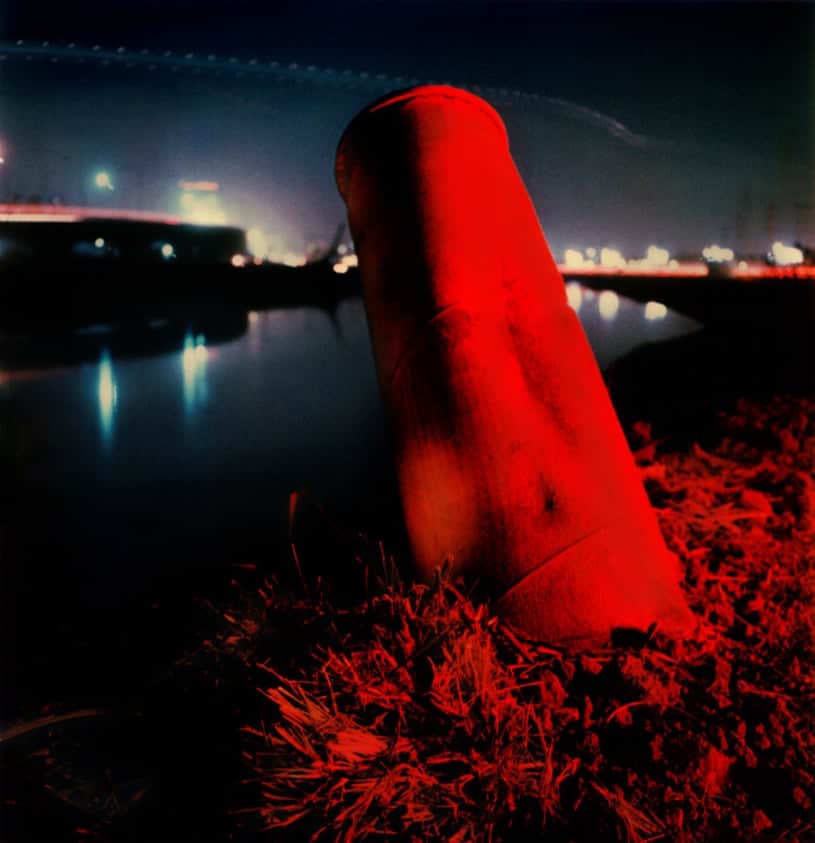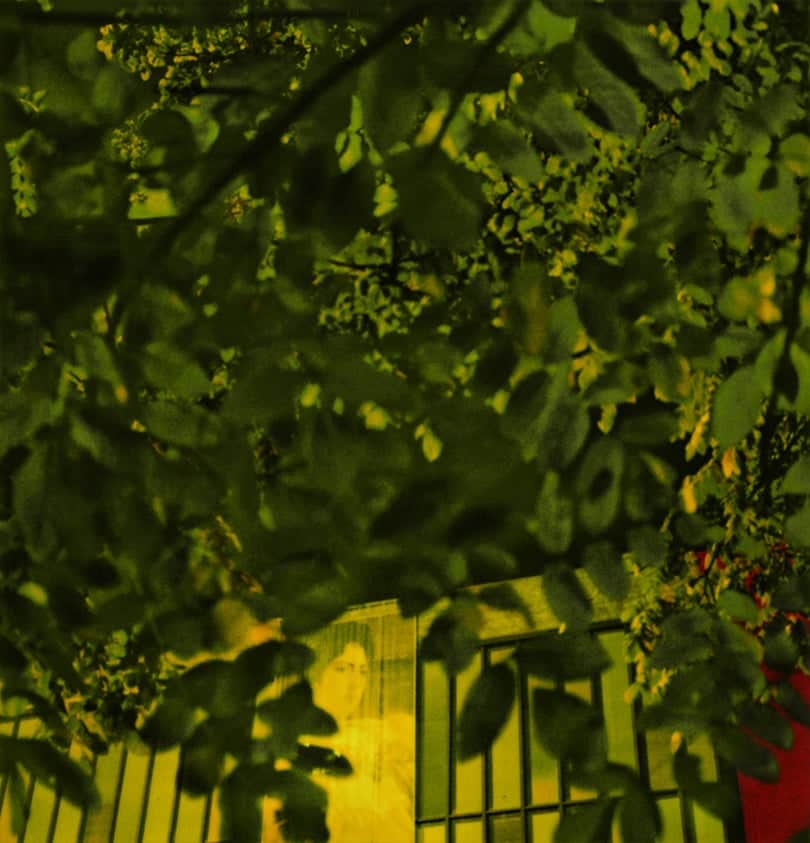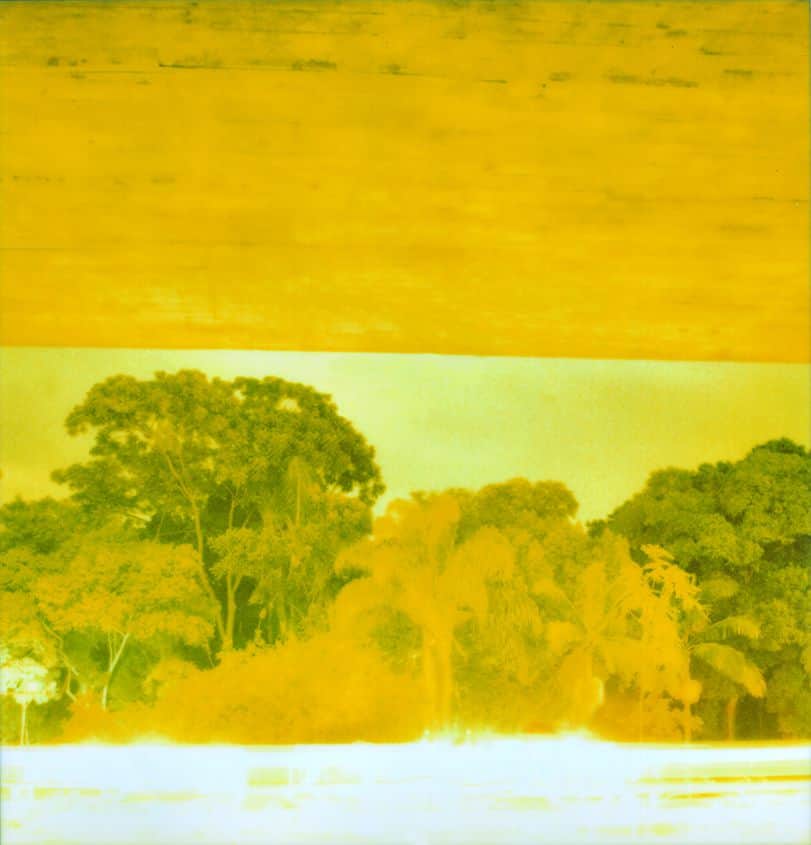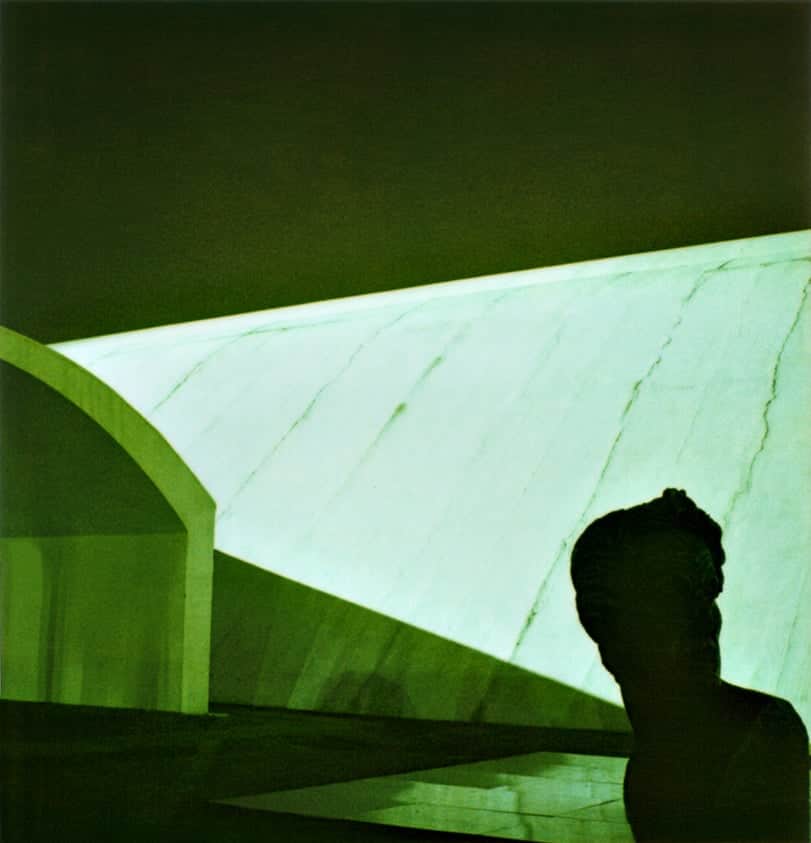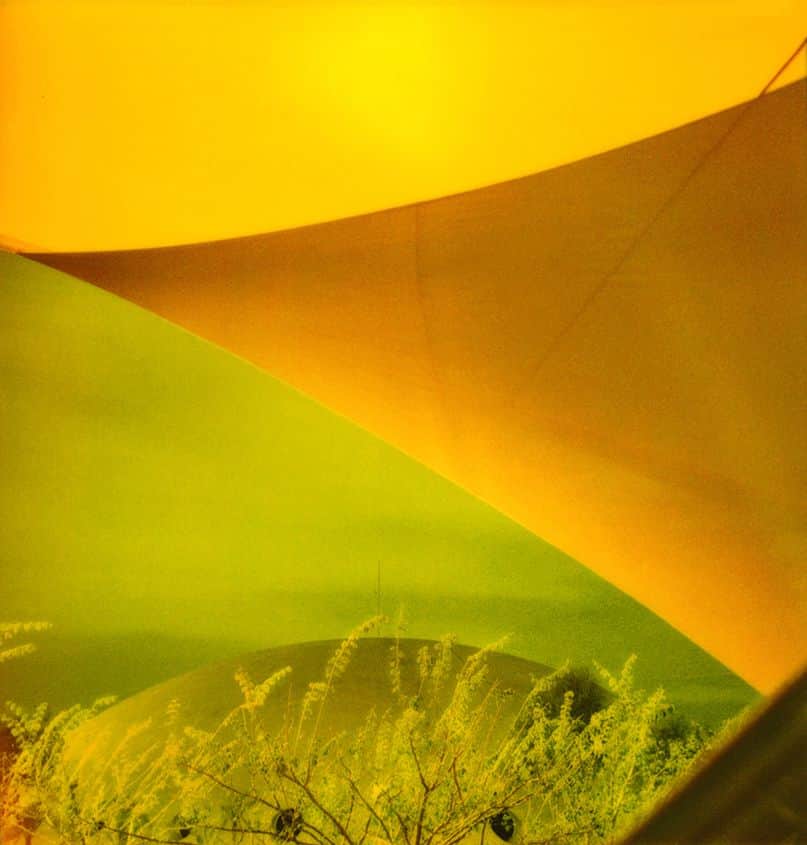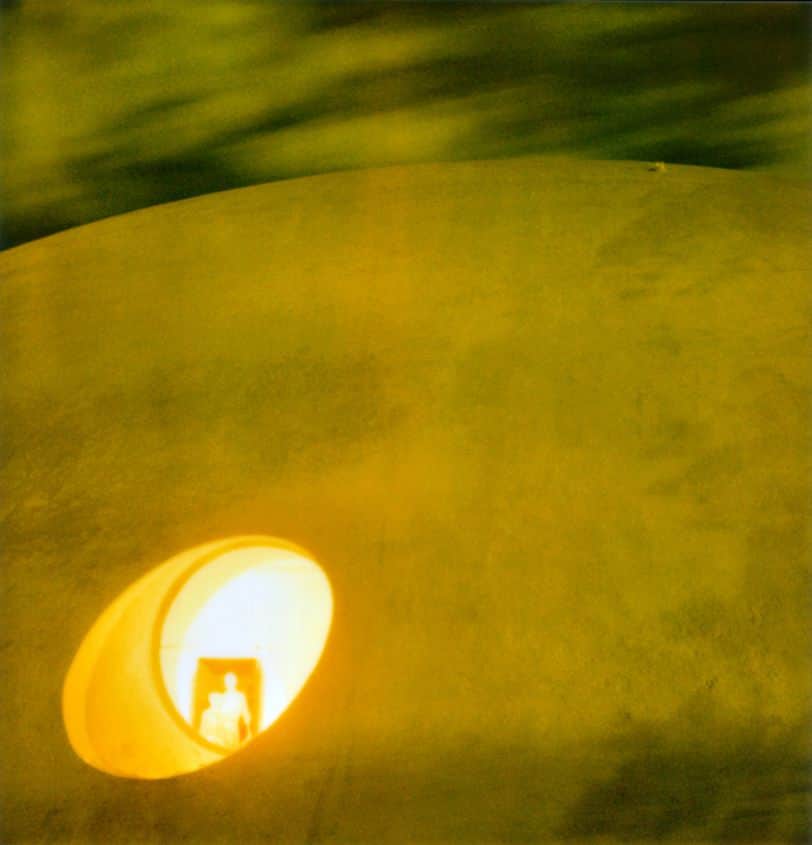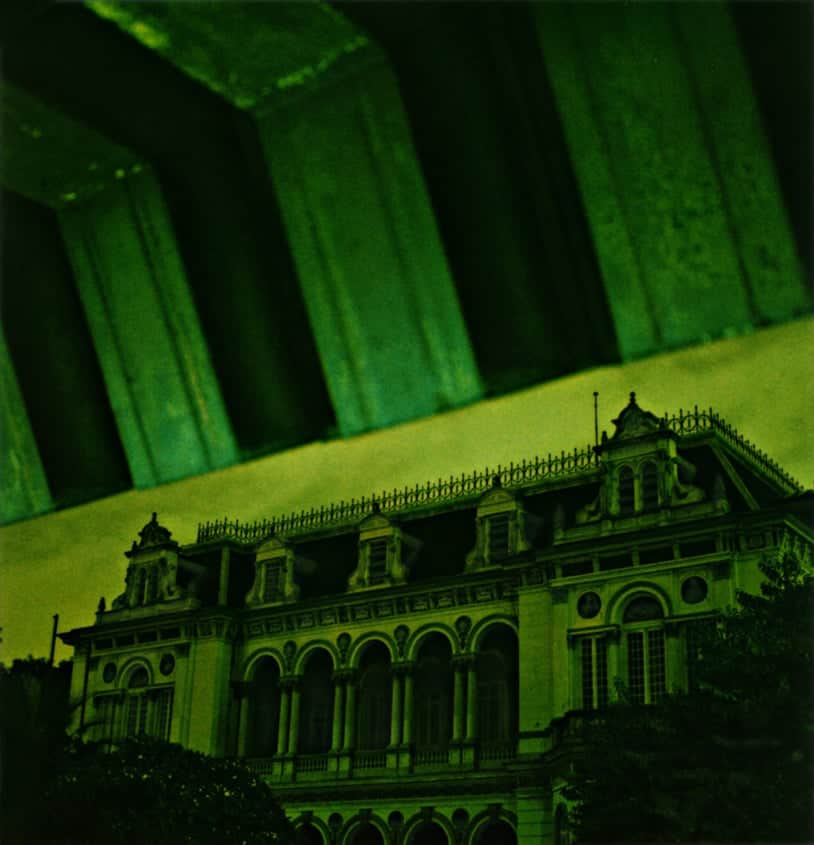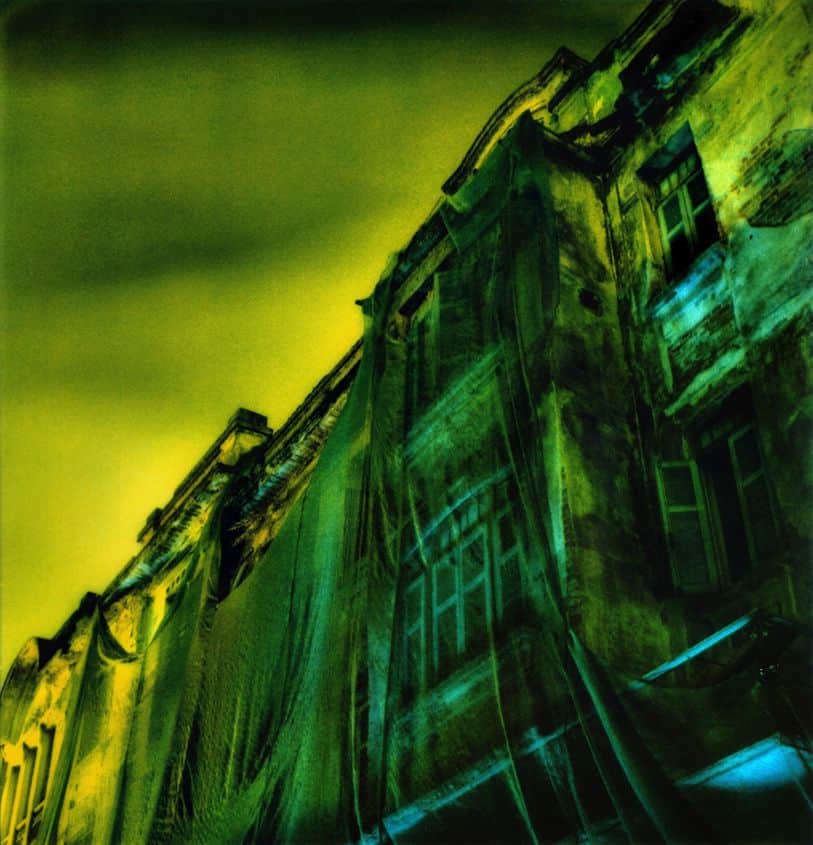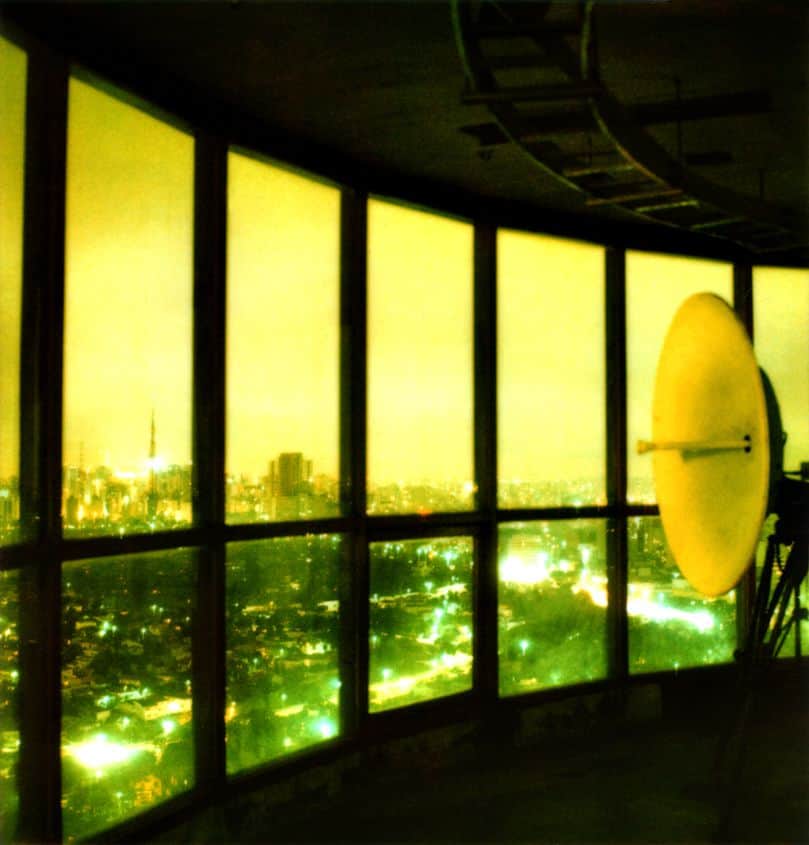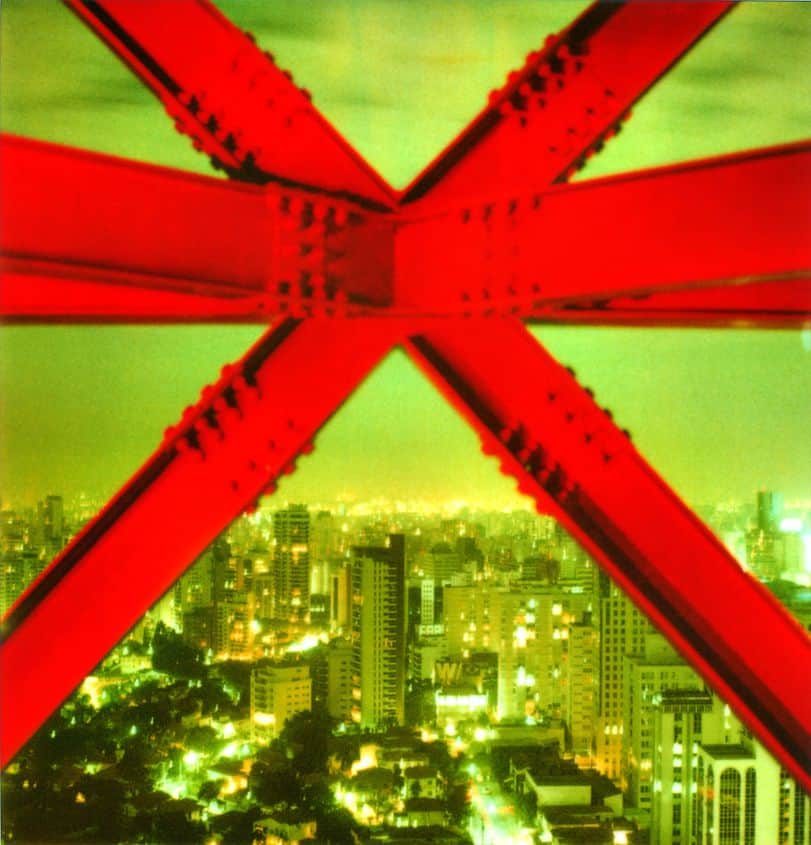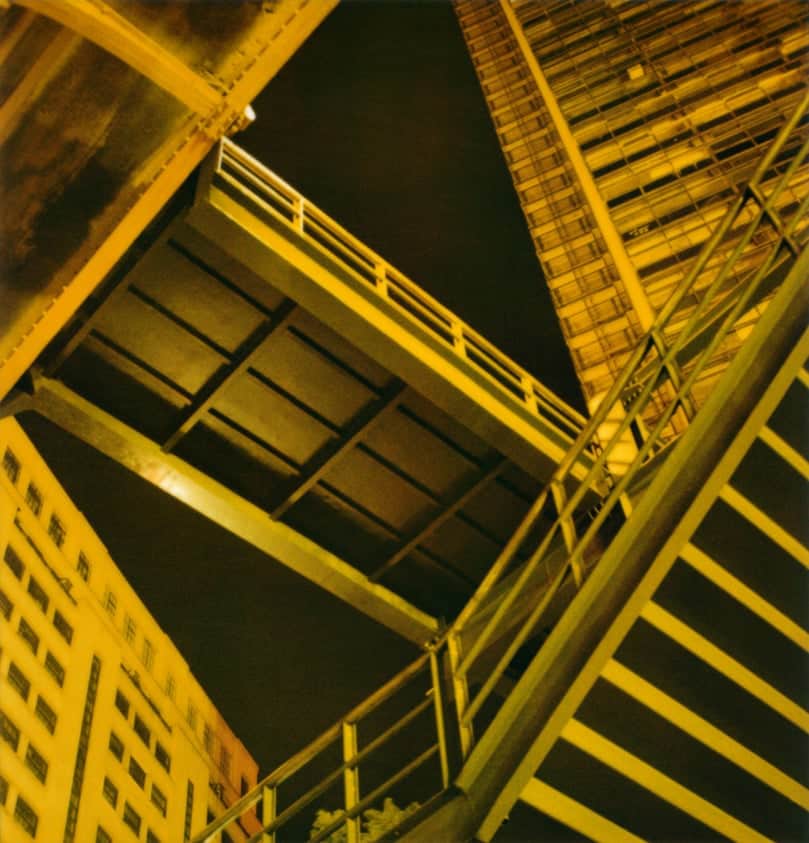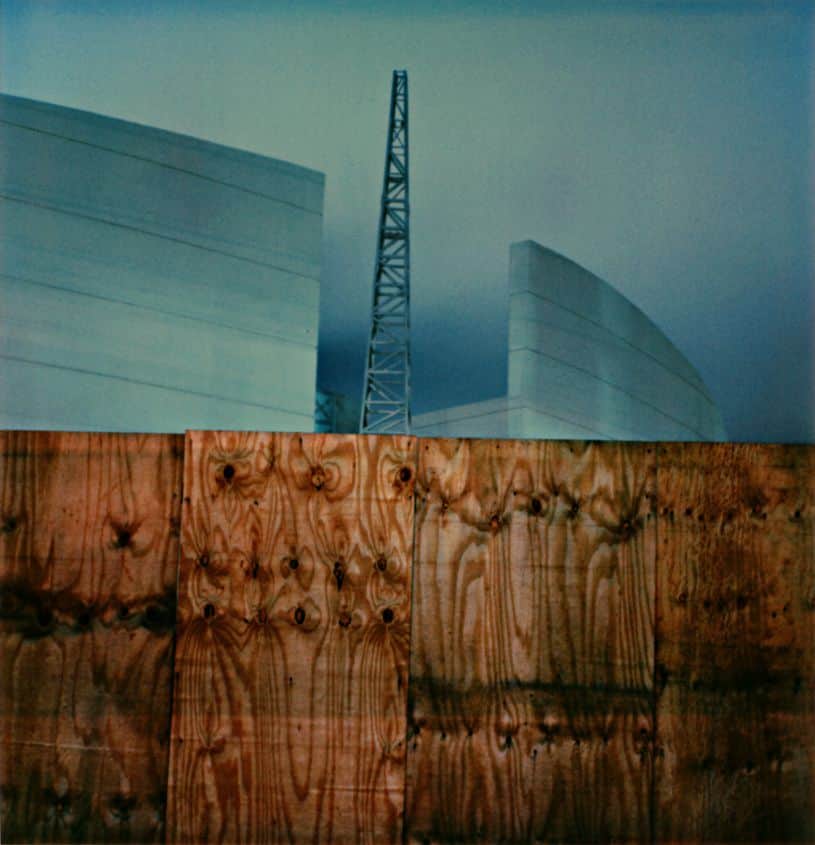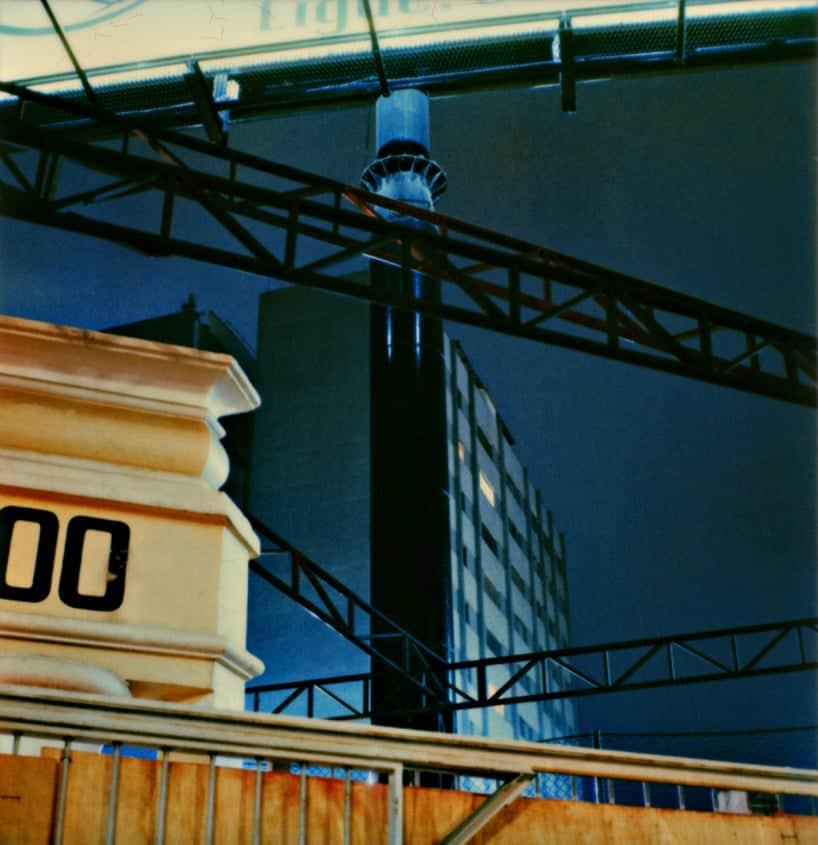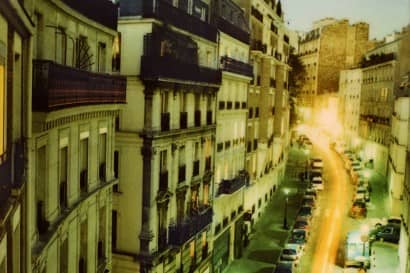- Aeroporto de Congonhas #1
- Aeroporto de Congonhas #3
- Aeroporto de Congonhas #4
- Anhagabaú #3
- Av. Berrini #2
- Av. dos Bandeirantes #7
- Av. Paulista #1
- Av. Paulista #7
- Belém #1
- Bienal #1
- Cemitério do Araçá #2
- Citibank #1
- Estação Berrini #1
- Estação Cidade Jardim #1
- Estádio do Pacaembú #1
- Estádio do Pacaembú #4
- Estádio do Pacaembú #6
- Fura Fila #5
- Hotel Hilton #1
- Hotel Unique #1
- Marginal do Pinheiros #1
- Marginal do Pinheiros #14
- Marginal do Pinheiros #19
- Marginal do Pinheiros #23
- Marginal do Pinheiros #25
- Marginal do Pinheiros #28
- Marginal do Pinheiros #33
- Marginal do Pinheiros #07
- MASP #1
- MASP #2
- Memorial da América Latina #1
- Oca #4
- Oca #6
- Palácio dos Campos Elíseos
- Praça da Sé #3
- Sumaré #1
- Torre TV Bandeirantes #1
- Viaduto Santa Ifigênia #1
- Vila Olímpia #1
- Vila Olímpia #5
About Nocturnes São Paulo
Nocturnes
Vasconcellos’s photographs seem to show a São Paulo that doesn’t exist. It is difficult to recognize the city in those images, where old construction fences andviaducts, chipped facades and debris seem to belong to another time, in opposition to the present city. Modern constructions, deserted, bathed in an oblique light, create anintensely plastic universe, oddly scenographic. Urban elements that look abandoned, without a clear function, forever unfinished. Gigantic structures, emerging from the night, dominate the urban landscape, and the remaining fall in dimness, in the most complete entropy.
Globalization has standardized cities in the same generic universe of malls, corporate buildings, and anodyne dwellings. The same glass facades, the same electric towers and bridges. Cássio Vasconcellos, however, makes the unfamiliarity of those everyday elements emerge. He removes things from time and place: everything seems in suspension. A displacement that allows to articulate them in other constellations.
The photographer restores a vigor that things seemed to have lost when they definitely dived in the kingdom of the disposable. Bringing to surface the mystery that nests in details, in fragments, in the abandoned. He operates in the gaps of the current urban landscape’s pasteurized continuum, where the prospect of new configurations and new meanings open up.
Walter Benjamin first noticed the extraordinary ability of cities to be transfigured. When, in the 19th century, the first galleries were built – the Parisian passages with glass roofs and gas lighting – the street became an habitation for the observer of the mutations that happen in a large city. Under the flickering gas light, shop windows turned into sceneries of wonderful worlds, passers-by appeared as potential characters of mysterious tales, and the most ordinary square could become a prairie full of wild Mohicans.
Our photographer roams the streets of São Paulo as a Baudelairian poet, sensitive to the unprecedented configurations that may emerge from the encounter of construction fences, aged statues and facades with aluminum bridges and glass buildings. Attentive to the unexpected affinities that such disparate elements can establish with each other.
The operation is always based on displacement. Unusual architectural elements,
seemingly belonging to other time and place, appear in the forefront, questioning all immediate perception. A building’s curved roof, parts of a viaduct or a tower’s metal grid abruptly invade the frame, introducing in the landscape an element of rupture, almost unquietness.
There is not a narrative to serve as main thread. Nothing aids us to locate those places in space and time. Signboards show up attached to walls, advertising panels are seen from behind, statues of heroic horsemen appear metamorphosed in migrants who seem to arrive to the city at dawn. All those urban elements are recomposed, in fragments, to tell another possible, imaginary, story.
Those places are usually empty. Silence only emphasizes the mystery that transpires from the scenes. Nor even nature, that here emerges mostly as a veil, obstructing vision, escapes from this disposition, simultaneously chromatic and opaque. Emerging from nothingness, monumental, those structures seem to have remained to testify about the city in a remote future. They look as if made of stone.
In those images, modernity seems to ally to antiquity. São Paulo is a city where the successive cycles of urban and real-state renewal systematically destroyed traces of the past, the places of history and the architectural monuments. It is a city that insistently rises on its own ruin.
Just as the engravings of Paris made by Meryon, these photos capture the city’s fragility, all that seems in the imminence of disappearing. A landscape approaching the catastrophe – a scenery even more current considering the financial crises that threaten the country. Images that transmit the feeling of seeing things that shortly won’t be before us. Cássio Vasconcellos makes the old image of the city sprout, from what will remain when everything becomes a field of ruins, without touching any of its modern aspects.
Attempt to the unusual in this scene: in the 21st-century São Paulo – a chaotic, disfigured megacity, assailed by social crisis and violence –, someone wandering at night through deserted streets and vacant lots, with a spotlight, whose battery comes in a market cart. The character himself expresses all that, at first, there would be of quixotic in that task. Everything seems to conspire so that the adventure is frustrated.
It isn’t possible anymore to see in the contemporary world. What is in stake here are the limits of figuration, the inability of the human mind to represent the metropolis’ huge forces. An organization of production and of space, a net of power and control, that are difficult for our imagination to understand. We still don’t have the required perceptive equipment to face those new configurations created by globalization.
These disconcerting urban spaces make impossible, according to Fredric Jameson, to use the ancient language of volumes, since they cannot be apprehended. The mutation provoked by the global city surpassed the human body’s capacity to locate itself, to perceptively organize the surrounding space and to cognitively map its position in the world. A situation in which the experience of the city transcends all the old habits of bodily perception. A disjunction between the body and the urban atmosphere that indicates our inability to understand the complex restructuring processes of the contemporary metropolis, of mapping the enormous global net of production and communication in which we are bound as individuals.
All the attempts to map the city through the experience of the streets – the Benjaminian drift or the affective plans of the situationists – implied the expectation of a perception renewal. In the totally built and elaborate universe of late capitalism, however, there is no place for that renewal. If, in the traditional city, the individuals’ limited and immediate experience was still able of embracing the social and economic form that regulates it, today that doesn’t occur.
The legibility of the cities’ landscape was related to imaginability, to the ability of evoking a strong image in the observer. It supposed visual references, a sensorial domain of the space by means of experience and visual observation. But the current configuration obstructs the mental mapping of urban landscapes. Cities no longer allow people to have, in their imagination, a correct and continuous location relating to the rest of the urban fabric. The individual subject’s phenomenological experience no longer coincides with the place where it happens. Those structural coordinates are no longer accessible to the immediate experience of living, and, usually, neither are conceived by people.
It happens a collapse of the experience. Today, individual subjects are inserted in a multidimensional set of radically discontinuous realities. An abstract, homogeneous, and fragmentary space. The urban space lost its “locability” – a precise inscription in geographical dimensions, accessible to the individual experience.
It becomes impossible to represent. That which the photographic image, as
comprehensive as it may be, isn’t able of. Space today is overloaded by more abstract dimensions. The problem of perception, of the individual’s positioning in this complex global system, is also of representability: although affected in the everyday by the corporate spaces, we don’t have the means to mentally mold them, even in an abstract way. A radical rupture happens between the everyday experience and those abstract spaces.
These new configurations thus demand an approach that reveals the very representational failure, the limits of the traditional location devices. They demand an interplay between presence and absence, in order to partially transmit the sense that those new and enormous global realities are inaccessible to any individual subject. Fundamental realities that are not representable, that cannot emerge immediately in face of perception.
The megacity is a territory where all the logic is apparently suspended. The
undifferentiated landscapes of entropy demand to avoid any visual or structural parameter of spatial or temporal orientation. Photography here is interesting not only for its documental capability, but mainly for its potential of assembly and association.
What does rescue this photographer’s solitary adventure, then? Cássio Vasconcellos doesn’t intend to show where things are, to map. The intense light he throws on things actually blinds. It allows you to walk through the city as if you had your eyes tight shut. His enterprise is essentially a tactile one. It is what allows him to discover the tangible presence of everything that, at first, one cannot see.
The night wanderings through the city began in 1988, but were intensified between 1998 and 2002. The work was accomplished with a Polaroid SX-70 automatic camera. It was not used, on purpose, any technical resources. The shots were sometimes made with a flashlight or a spotlight, and colored filter. The originals were scanned and printed with ink-jet, in 11.8x 11.8inch format.
Not by accident, the copies are made on porous paper, as if they were engravings. The Polaroid image makes the city, plunged in obscurity, to emerge dazzlingly. But the extraordinary plasticity of urban landscapes, intensely colorful, is compensated by the texture provided by the paper print. It attributes materiality and permanence to all those seemingly ethereal and fleeting things. The photographer scratches, as if with a burin, the metropolis’ most hidden bowels.
Nelson Brissac
Philosopher
=====
Enigmas
“God invented the nights, armed
Of dreams and forms in the mirror
So that man knows he is reflex
And vanity. Hence we are alarmed.”
Jorge Luis Borges, The Mirrors (fragmentNel)
Contemporary photography has a strange capacity of disorientation. At times, it is too obvious and raw, offering itself to the different creative possibilities of interpretation; at other times it mainly belongs to the order of mysteries in the world of representation, either for its elaborate construction process, either for its radical visual experience, giving the image an enormous power of seduction and persuasion. In this differentiated photograph in terms of production and apprehension, that has an assured presence in the visual arts’ panorama, we can locate the work of Cássio Vasconcellos.
His previous series punctuate the history of Brazilian photography in the last two decades, exactly because they always point to different production strategies that potentiate the interventions and experiments that provoke our more immediate understanding. In this new essay, Nocturnes São Paulo, Vasconcellos assumes the challenge of redrawing a spatial cartography of the city of São Paulo, and he intends to register that vast and moving territory that modifies every day through images of undeniable beauty and surprising originality. Once again, his bold exercise of looking at and noticing fits in the new paradigms where the contemporary photography moves, searching to expand his experience of making to enlarge the aesthetic spectrum of representation.
In this series, as well as in the previous ones, Vasconcellos permits himself to make experiments of all orders, accomplishing some interventions that allow a research of the different results offered by the photographic language. Once again, he chooses the technical simplicity when making the register, and afterward he begins an investigative course quite uncommon in the Brazilian photography. His goal is always to search for a certain abstraction in the image, to leave the observer in the limit of the ecstasy of disturbance. Vasconcellos defends the idea that the most fascinating in photography is exactly this intriguing possibility that it offers, operating in the frontiers between “real” and “imaginary.”
We are supposing that contemporary photography is determined not to completely abandon the “real”, but, above all, to deprive itself of the exaggerated realism that all the photographic culture has linked to this medium, as if it were its exclusive attribute. Actually, we can evaluate the trajectory of photography as a visual manifestation that abandoned its intended early ambition – to be art –, manifesting and exalting in this first moment the attributes of technique, fluidity and detail, opacity and obscurity, the flagrant moment of a visible existence. Today, when it finds the accesses and allows itself to be contaminated by the new ways of visual arts, it gains significance as a powerful imagery manifestation, legitimating its ties with precariousness and imprecision, with the imaginary and fiction, with the illusory and symbolic.
In that sense, Cássio Vasconcellos’s itinerary is in perfect tune with that which now we denominate expanded photography – the one that breaks paradigms, that subverts the instituted model, that moves toward a fraying of its specificity. In this series, he instituted an aesthetic program that, unlike his multiple and singular previous experiences, moves toward a differentiated interpretation of the urban space, with the strength and the boldness that challenge the pasteurized banality of the ordinarily conveyed image. He offers us, besides the carefully chosen forms, the opportunity to contemplate a city intimately unknown, aiming his camera to that which our busy eyes can’t notice.
Vasconcellos insinuates the presence of a mystery that is never unveiled. His pictures demand the observer’s time before they allow to be recorded somewhere in memory, because they are images where certainties do not rule. Just this sense of mystery that resides in the immaterial phenomenon that is engendered by the simple fact that we cannot immediately recognize that visible world so strangely registered. That is not metaphysical, but it is outside our field of perception. There is in this series of photographs by Cássio Vasconcellos a special combination of perceptive attention and concentration, of amazed patience, of irrevocable exaggeration with the world of appearances.
The new series was developed through a creative process unlike the previous ones, which demanded a more physical and material intervention, in the matrix or in the copy. To develop it, Vasconcellos used a Polaroid SX-70 camera, a classic among imaging professionals. Since the early results presented a quite somber foreground, he tried in another series using, first, his own car’s headlights and, later, incorporating a light source coupled to a battery. With that lighting, he tried the foreground with pure red, then yellow and, after dominating the process, depending on the image and on the effect, he would choose the desired color. Those alternatives compose this creative and instigating urban landscape.
Starting from the Polaroid image, that notably presents a texture and offers an interesting color saturation, different from the conventional process, Vasconcellos elaborated new stages of working procedure and development. He processes the image through a scanner and, after that, through a digital output, he produces a print in paper made of neutral cotton, with mineral ink to guarantee a high durability. Vasconcellos definitively develops his series toward an expanded photography, a kind of hybrid that results from the intersection of the several previously mentioned procedures. That mutation in photography’s identity, perceptible in the difference between image and support, configures a new receptive relationship.
Cássio Vasconcellos develops in Nocturnes São Paulo his excessively formal concern, and his ambition is to minutely elaborate the framings, that are broken by the diagonal or curved lines that interrupt the parallel plans at the image surface, and create the illusion of depth. On the other hand, there is always a relationship among those plans that suggests a transition between inside and outside, above and below. Ultimately, from a “real” world to a transcendent one. He looks for the beauty in the city’s dismal spaces, inhospitable and unrecognizable. His plastic perception of the chaotic urban space is able to transport us to a world of lights that articulate in a plural atmosphere by the tensions that emanate from it.
The city is almost seen as a still-life, and the result is a photograph that contemplates the dream vision. A surreal figuration revealed in the wonderful experience of the very desires of the unconscious. Vasconcellos mixes the surprising and dissonant fragments of the urban space and offers us the sensation of a theatrical harmony. Rosalind Krauss, when relating sculpture to theatricality, recalls that the term is wide and can be related as well to kinetic art as to the art of lights. Vasconcellos astonishes us when he makes us observe that photography of luminous, unexpected and enigmatic spots, that stimulates our imagination.
But nothing is dramatized, because his photography is a direct register of the few and different tones that prevail at night in the city. In fact, a seemingly isolated, abandoned city, that just allows the registration of rhythmic luminous pulse, programmed to show it in the fleeting radiance of a few lights, as if it was a forgotten lighthouse in an island of impenetrable signs that hide the mysteries of night. Cássio Vasconcellos proposes a hypnotic contemplation of an ephemeral atmosphere accurately seized by his sensitive eye, that tries to make visible a city that exists in latent form, to communicate its inner world. A subtle melancholy that hallucinates the observer who lives in the city of São Paulo, but that is unable to decipher it in that nocturnal delicacy.
He removes the most immediate identification of the city to universalize the reading of the urban space. He uses photography to shatter our references, to transform them in pure images, as if they were signs of themselves, a self-reference. That is a way of alerting us, with refinement and subtlety, that the city pulses incandescent, synchronically, almost in the same shades. The dark-blue of night that our eyes don’t see is registered by the film as if it were an improved surrogate for our limited visual perceptive system.
The few colors that compose his constructed palette characterize the series Nocturnes São Paulo, creating a singular atmosphere that gives an uncommon vitality to the pictures. On the other hand, the dramatic solitude that excites our senses is provoked by the dominant primary lights in this series: red, blue, yellow. The consistency and the logic of those images evidence a strange combination of distance and intimacy, that fascinates and arouses emotions. A dream vision of the city that reveals beauty, enhanced by the pictorial light that establishes a kind of passage to an imaginary poetic dimension.
Before those images by Cássio Vasconcellos, we can notice a climate of intimacy. Minimalist and poetic. An exercise of sensibility and technical accuracy that searches lightness to transmit a combination of serenity and melancholy. His aesthetic solutions are always accompanied of procedures that surprise our perception.
He tries to abandon the syntax of the conventional picture, when aiming his creative energy to move our attention, to contaminate the classic procedures and to articulate images and materialities of other supports. A search for photography’s tactilility, that arouses our senses and transforms our vision, now filling our eyes with colors and emotion, now exploring the gaps between lights and the shades of reason.
Rubens Fernandes Junior
Photography researcher and critic
